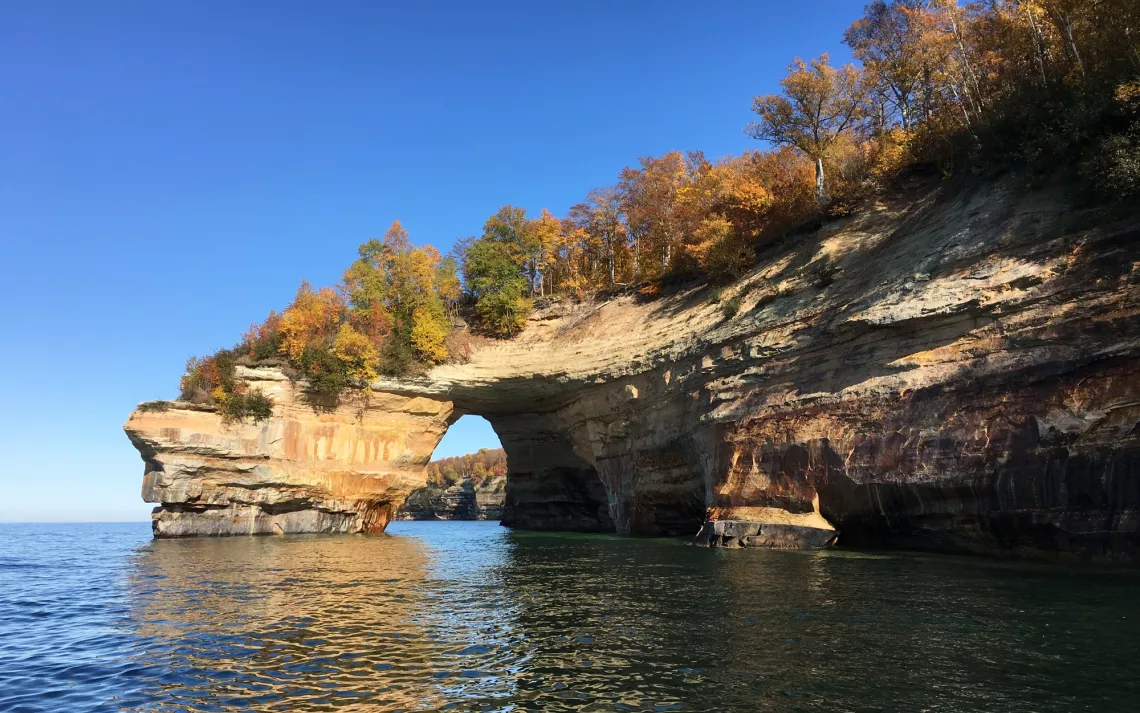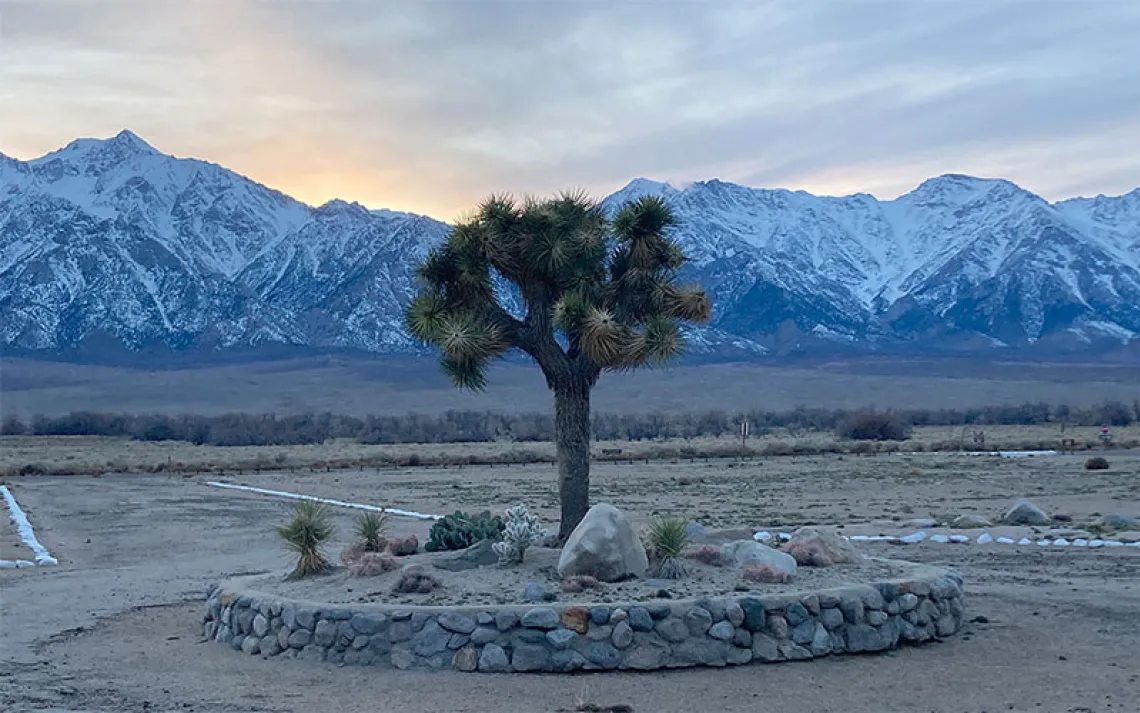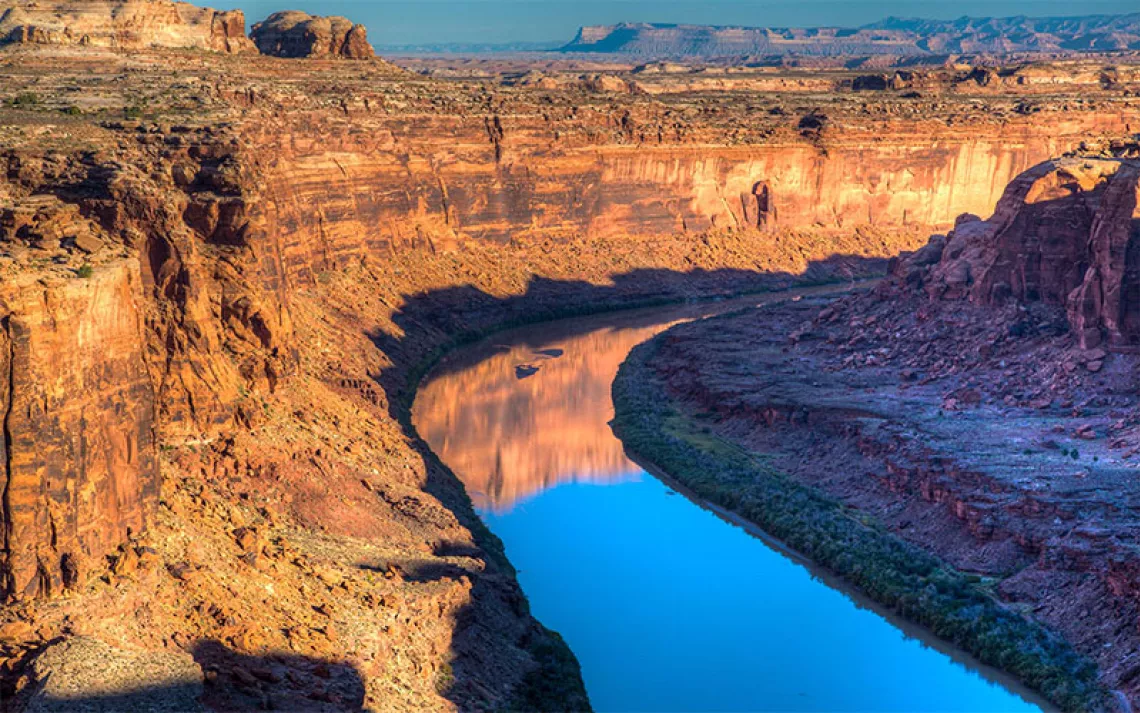Explore: Pictured Rocks
By the shores of Gitche Gumee, the Pictured Rocks hang over the world’s largest, and perhaps most capricious, freshwater lake

Leaves are changing colors above Lake Superior and Lovers Leap, Pictured Rocks National Seashore| Photo courtesy NPS
"It has been my good fortune to see the lake clear, smooth, and brilliant. [It] caught and held the scene around it—the cloud-littered shining skies, the quiet stately forests, and the towering rocks, which rise in all the forms of turrets, pinnacles, ramparts, castellated heaps, and frowning walls, now green, now red, now purple, and anon dull brown or ashen."
—Julian Ralph, "Brother to the Sea," Harper’s New Monthly Magazine, 1892
By the shores of Gitche Gumee, the Pictured Rocks hang over the world’s largest, and perhaps most capricious, freshwater lake. Driven by the wind, Lake Superior’s still water can turn furious in an instant; near this southeast shore alone, the lake has devoured dozens of schooners, steamers, tugs, and yachts since the early 19th century. Once lodged on the lakebed, the vessels are preserved in the clear water that remains frigid—about 39 degrees—year-round. They appear and disappear like hallucinations, as deep currents bury some and uncover others from their sandy graves. The history of these wrecks of time, some of which are intact down to their silverware, was once detailed in underwater interpretive trails before they were obliterated by the churning waters. Divers can still wend through the ships and nearby sea caves, carved as the mighty lake eats into the base of the sandstone cliffs of the country’s first national lakeshore.

Sign up to receive Sierra News & Views
Get articles like this one sent directly to your inbox weekly.
With this action you affirm you want to receive Sierra Club communications and may vote on policy designated by the Sierra Club Board.
Above the surface, wind and waves have whipped nearby bluffs to create the Grand Sable Dunes, four square miles of sand sprawled on a glacial moraine. Michigan has more freshwater sand dunes than anywhere else, so huge they can be seen from space. The shifting sands supply a home fit for masochistic plants like Pitcher’s thistle and Lake Huron tansy that don’t mind being repeatedly buried. The wind perpetually rearranges the dunes, and storms can even alter their makeup: When lightning strikes, its heat—greater than the sun’s surface—fuses bits of sand into glassy tubes called fulgurites.
Down the shore from Grand Sable, the variegated Pictured Rocks tower up to 200 feet above the lake. Groundwater tinged with minerals like iron, copper, and manganese dribbles through cracks, dyeing the gray sandstone red, green, orange, and tan. In some places, the cliffs take on fairytale shapes, like Miner’s Castle, Lover’s Leap, Chapel Rock, Rainbow Cave. Beaten back by the relentless waves, the cliffs continue to shrink inland, and the shining Big-Sea-Water expands her domain.
 The Magazine of The Sierra Club
The Magazine of The Sierra Club



